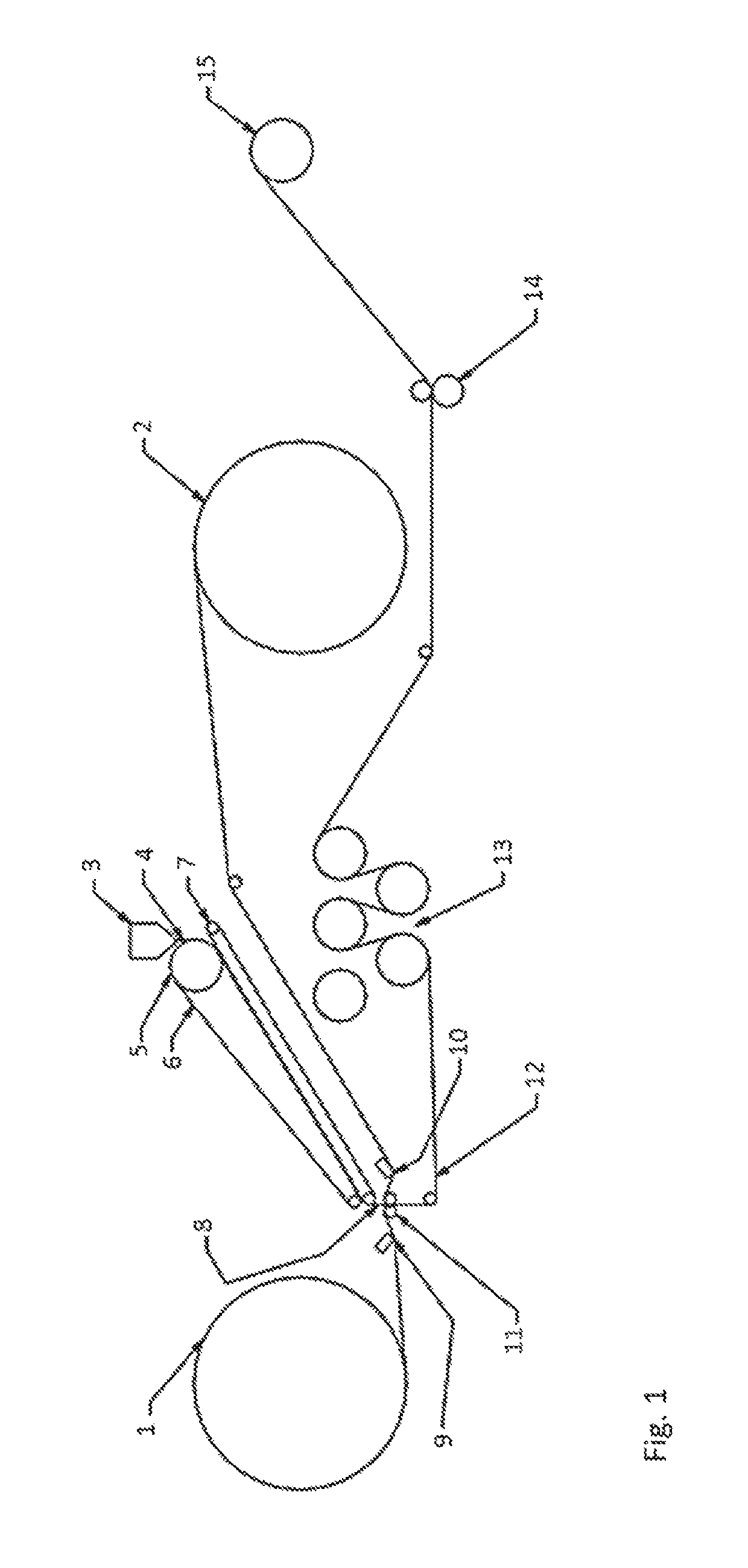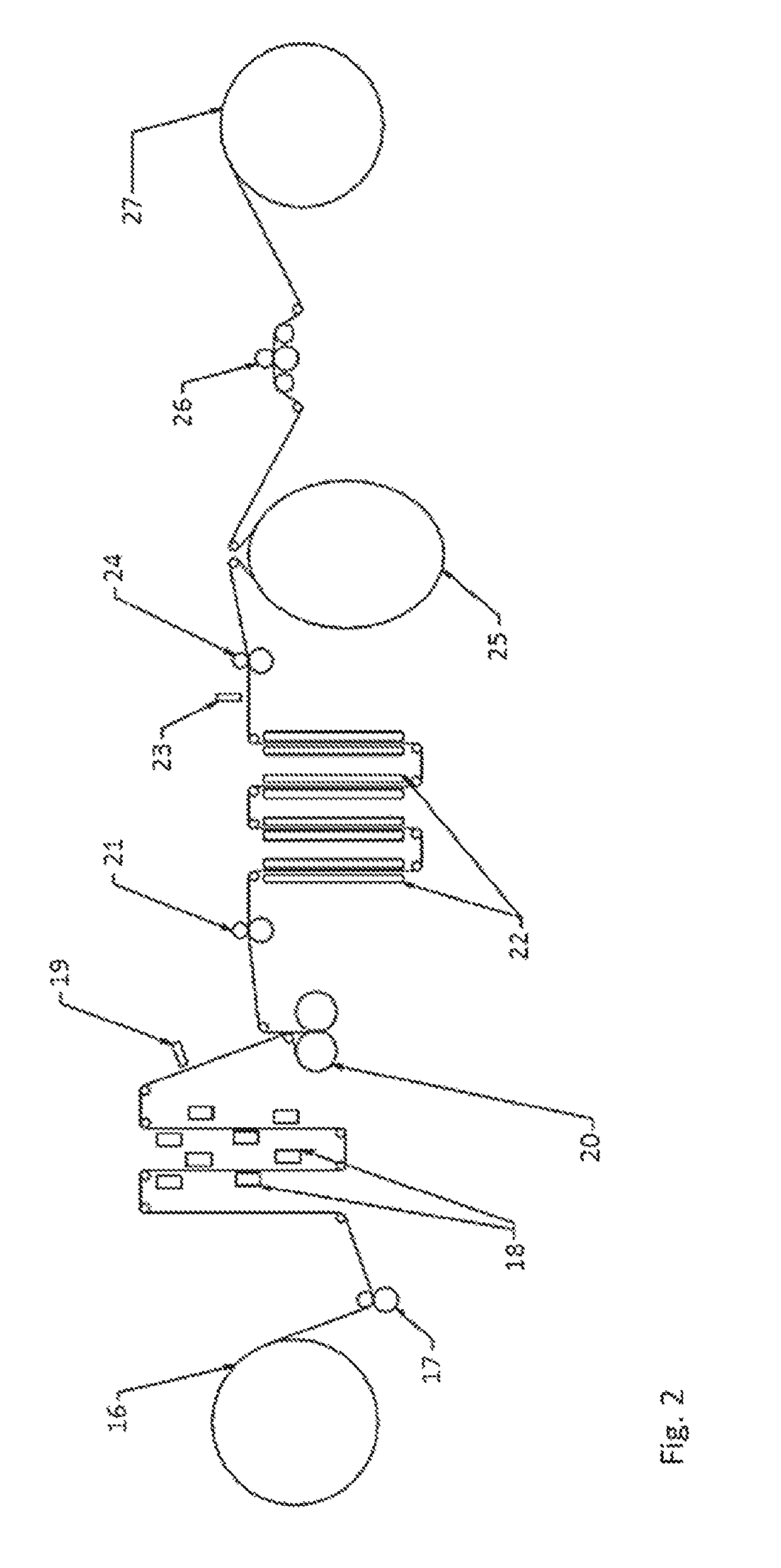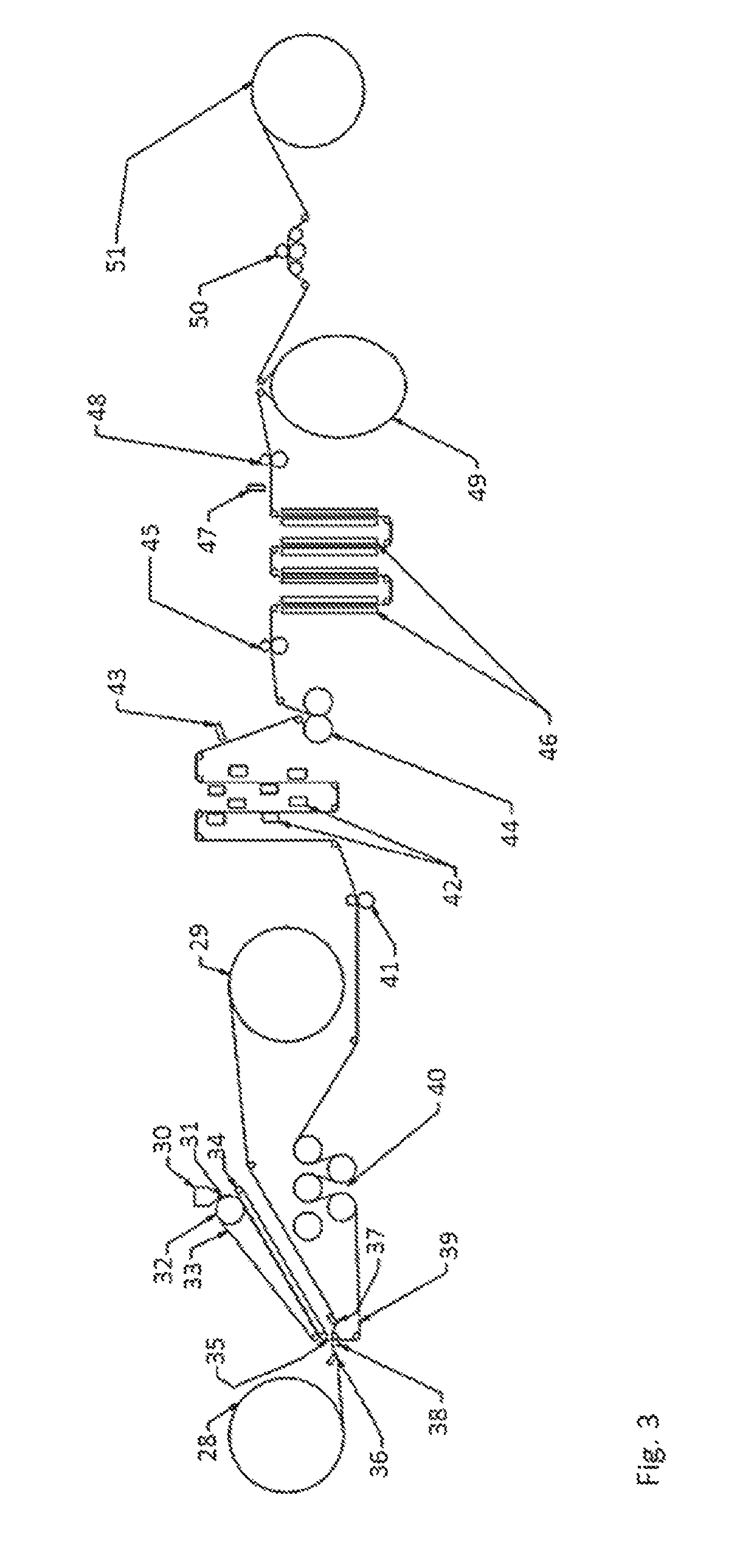Manufacturing process for elastomeric laminate
a manufacturing process and technology for elastomeric laminates, applied in the direction of layered products, chemistry apparatus and processes, other domestic articles, etc., can solve the problem of challenging process for elastomeric laminates which do not subsequently delaminate, and achieve superior properties and manufacturing processes
- Summary
- Abstract
- Description
- Claims
- Application Information
AI Technical Summary
Benefits of technology
Problems solved by technology
Method used
Image
Examples
example 1
[0057]In a two-step manufacturing process for an elastomeric laminate, the following process was used. Two nonwoven rolls (NW BiCo material) were unwound and one fed to each side of an extruded melted polymer (Kraton G1643MS, from Kraton Polymers US, Houston, Tex.). The extruded melted polymer has been fed as a film from a die and deposited onto a conveyor belt. The drive roll was chilled and the polymer film was conveyed by two transfer belts. At a combining / nip area, each of the two nonwoven facings were fed into contact with coating applicator. The coating applicator was a hot melt slot coating applicator. Above the nip, the elastic film was fed by the conveyor belts. The hot melt adhesive was applied to the two nonwovens prior to lamination. Exemplary patterns include lines across the width, 0.85 mm wide, 2 mm center distance. The laminated web resulting from this was fed through rollers that were chilled as necessary. The laminated web was optionally slit at this point, but was...
example 2
[0060]The single-step process is exemplified in FIG. 3. Two nonwoven facings 28 and 29 are unwound and a hot melt adhesive, 36 and 37, respectively, is applied in a pattern to each on a side thereof that is brought into contact with an extruded elastomeric film 31. The extruded film results from a polymeric composition, for example a styrenic block co-polymer, held in a die 30 and extruded therefrom onto a conveyer belt 33 and chilled by a chilled roll 32. The chilled extruded film 31 is then transported between conveyer belts 33 and 34 to a nip unit 38 where the two nonwoven facings having hot melt adhesive patterned thereon are applied, adhesive side facing the extruded film, one to either side of the chilled extruded film so as to produce a laminated web 39. The laminated web 39 is transported through a plurality of chilled rolls 40 and fed via a drive nip station 41 through a web heating station 42 to activation unit 44. An exemplary activation unit is more fully described in FI...
PUM
| Property | Measurement | Unit |
|---|---|---|
| angle | aaaaa | aaaaa |
| angle | aaaaa | aaaaa |
| width | aaaaa | aaaaa |
Abstract
Description
Claims
Application Information
 Login to View More
Login to View More - R&D
- Intellectual Property
- Life Sciences
- Materials
- Tech Scout
- Unparalleled Data Quality
- Higher Quality Content
- 60% Fewer Hallucinations
Browse by: Latest US Patents, China's latest patents, Technical Efficacy Thesaurus, Application Domain, Technology Topic, Popular Technical Reports.
© 2025 PatSnap. All rights reserved.Legal|Privacy policy|Modern Slavery Act Transparency Statement|Sitemap|About US| Contact US: help@patsnap.com



